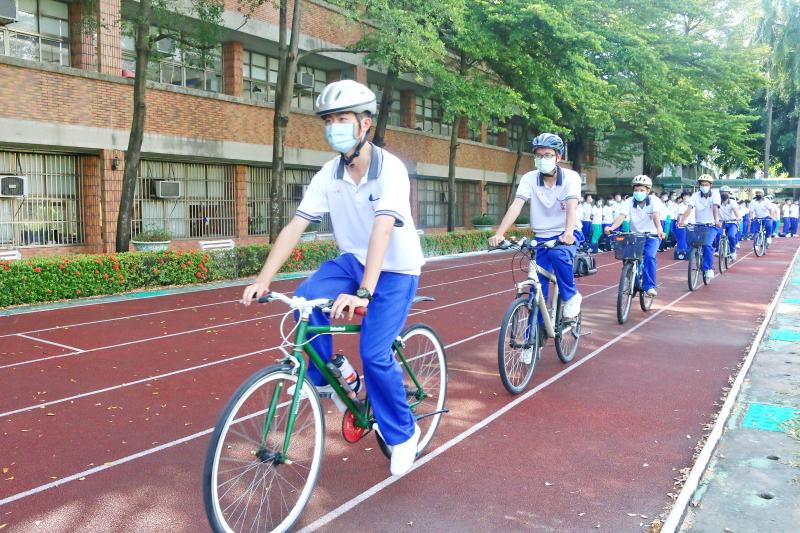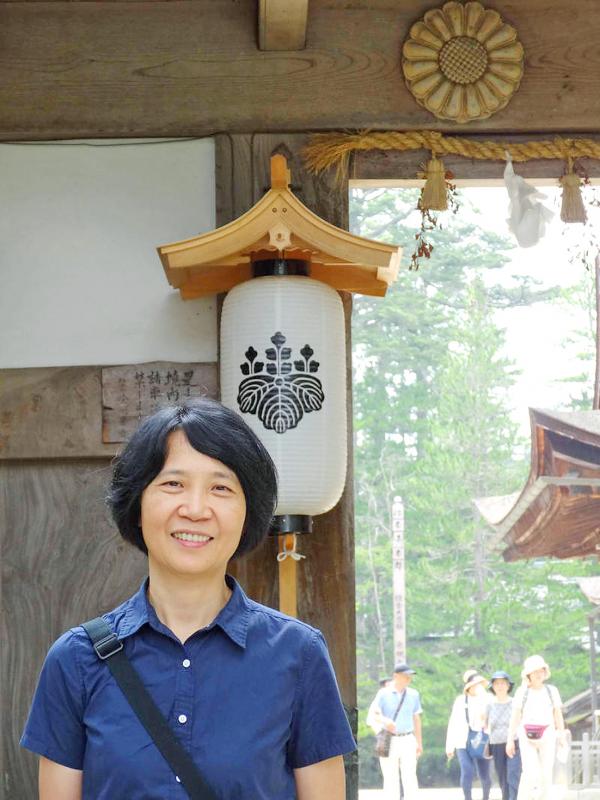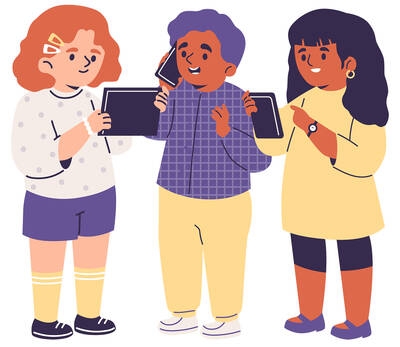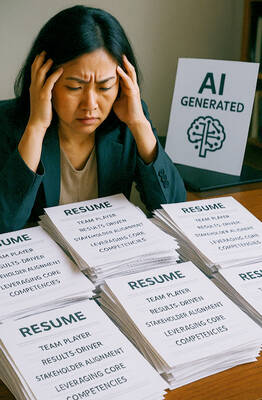While riding a bicycle in New Taipei City’s Tamsui District on Oct. 15, author Chen Ro-jinn was hit from behind by a scooter courier. Chen was alive when paramedics arrived but she was unconscious and had a fractured skull. After being taken to hospital, she died of her injuries on Monday last week at the age of 57.
At present, Taiwan has no legal requirement for bicyclists to wear helmets, but the Ministry of Health and Welfare’s Health Promotion Administration (HPA) has in the past called, as well as mandatory wearing of helmets by motorcycle and scooter riders, for cyclists to also take safety seriously and put on a cycle helmet when riding on the road.
The HPA says people often wrongly believe that because bicycles are human-powered they must be safer than motor vehicles. What they fail to consider is that bicycles and motorized vehicles do not have separate lanes, and bicycles lack protective structures, making cyclists prone to physical injury in the event of a crash, especially during rush hour.

Photo: Hung Chen-hung, Liberty Times 照片:自由時報洪臣宏
According to a 2016 study by Taipei Medical University, the number of bicycle accidents in Taiwan grew from 7,213 in 2005 to 14,874 in 2013, and the proportion of bicycle accident deaths among all traffic accident deaths grew from 3.55 percent to 6.74 percent. The likelihood of an accident resulting in death, coma or disability was 2.4 times higher for those who did not wear a helmet while cycling than for those who did. 20.7 percent of those who did not wear helmets were in moderate to severe condition when they were admitted to hospital, compared to 2.3 percent of those who wore helmets. Those wore helmets stayed for fewer days in hospital than those who did not.
There are geographical and age differences in bicycle accidents. In urban areas, more accidents occur during commuting periods, whereas in rural areas the accident rate is higher in the afternoon. The number of bicycle accident patients with moderate to severe head trauma is about 3.2 times higher among those aged 65 years or older than those under 18 years old.
The HPA says that the number of deaths due to head trauma in motorcycle accidents in Taiwan fell sharply after the 1997 passage of a law mandating wearing a helmet when riding motorcycles and scooters. In contrast, in recent years, with the trend of saving energy and reducing carbon emissions, more and more people are riding bicycles, but most of them have not gotten into the habit of wearing helmets, so when an accident happens it can easily cause irreparable damage and regret.

Photo from the National Taiwan University Web site 照片翻攝自台大新聞研究所網站
(Liberty Times, translated by Julian Clegg)
作家陳柔縉十月十五日在新北市淡水區騎腳踏車時,遭後方騎機車的外送員追撞。救護人員抵達時,陳柔縉仍有生命跡象,但意識不清、頭部骨折,送醫急救後仍於上週一傷重不治,享年五十七歲。
目前國內法規並未要求騎自行車須戴安全帽,但衛生福利部國民健康署過去即曾呼籲,除了機車族強制戴安全帽外,單車族更應重視安全,配戴單車專用安全帽才上路。
國健署強調,一般人常誤認自行車是人力車,要比機動車輛來得安全;殊不知自行車與機動車未分道行駛,及缺乏保護裝置,導致自行車騎士在車禍時,易發生身體創傷,尤以上下班尖峰時間最為常見。
根據台北醫學大學二○一六年的研究發現,二○○五年至二○一三年,台灣腳踏車事故從七千二百一十三件成長到一萬四千八百七十四件,腳踏車事故死亡佔交通事故死亡率也從百分之三點五五提升到百分之六點七四。而騎乘腳踏車未戴安全帽者預後結果為死亡、植物人、殘障狀態為有戴安全帽者二點四倍。未戴安全帽者有百分之二十點七入院時嚴重度為中重度,戴安全帽者為百分之二點三。配戴安全帽者住院天數也比未配戴安全帽者短。
腳踏車意外事故也有地域性及年齡差異,都市較多是在上下班通勤時段發生事故,鄉鎮則是下午時段較高;腳踏車事故頭部外傷病人年齡六十五歲以上,嚴重程度為中重度的人數,高於十八歲以下病人約三點二倍。
國健署指出,自一九九七年立法強制騎乘機車須戴安全帽之後,國內因機車肇事頭部外傷死亡人數急遽減少;反而近年來在節能減碳的風潮下,騎自行車的人越來越多,卻大多未養成戴安全帽的習慣;一旦發生事故,容易造成無可彌補的遺憾。
(自由時報)

In an effort to fight phone scams, British mobile phone company O2 has introduced Daisy, an AI designed to engage phone con artists in time-wasting conversations. Daisy is portrayed as a kindly British granny, exploiting scammers’ tendency to target the elderly. Her voice, based on a real grandmother’s for authenticity, adds to her credibility in the role. “O2” has distributed several dedicated phone numbers online to direct scammers to Daisy instead of actual customers. When Daisy receives a call, she translates the scammers’ spoken words into text and then responds to them accordingly through a text-to-speech system. Remarkably, Daisy

Bilingual Story is a fictionalized account. 雙語故事部分內容純屬虛構。 Emma had reviewed 41 resumes that morning. While the ATS screened out 288 unqualified, she screened for AI slop. She could spot it a mile away. She muttered AI buzzwords like curses under her breath. “Team player.” “Results-driven.” “Stakeholder alignment.” “Leveraging core competencies.” Each resume reeked of AI modeling: a cemetery of cliches, tombstones of personality. AI wasn’t just changing hiring. It was draining the humanity from it. Then she found it: a plain PDF cover letter. No template. No design flourishes. The first line read: “I once tried to automate my

Every May 1, Hawaii comes alive with Lei Day, a festival celebrating the rich culture and spirit of the islands. Initiated in 1927 by the poet Don Blanding, Lei Day began as a tribute to the Hawaiian custom of making and wearing leis. The idea was quickly adopted and officially recognized as a holiday in 1929, and leis have since become a symbol of local pride and cultural preservation. In Hawaiian culture, leis are more than decorative garlands made from flowers, shells or feathers. For Hawaiians, giving a lei is as natural as saying “aloha.” It shows love and

1. 他走出門,左右看一下,就過了馬路。 ˇ He walked outside, looked left and right, and crossed the road. χ He walked outside and looked left and right, crossed the road. 註︰並列連接詞 and 在這句中連接三個述語。一般的結構是 x, y, and z。x and y and z 是加強語氣的結構,x and y, z 則不可以。 2. 他們知道自己的弱點以及如何趕上其他競爭者。 ˇ They saw where their weak points lay and how they could catch up with the other competitors. χ They saw where their weak points lay and how to catch up with the other competitors. 註:and 一般連接同等成分,結構相等的單詞、片語或子句。誤句中 and 的前面是子句,後面是不定詞片語,不能用 and 連接,必須把不定詞片語改為子句,and 前後的結構才相等。 3. 她坐上計程車,直接到機場。 ˇ She took a cab, which took her straight to the airport. ˇ She took a cab and it took her straight